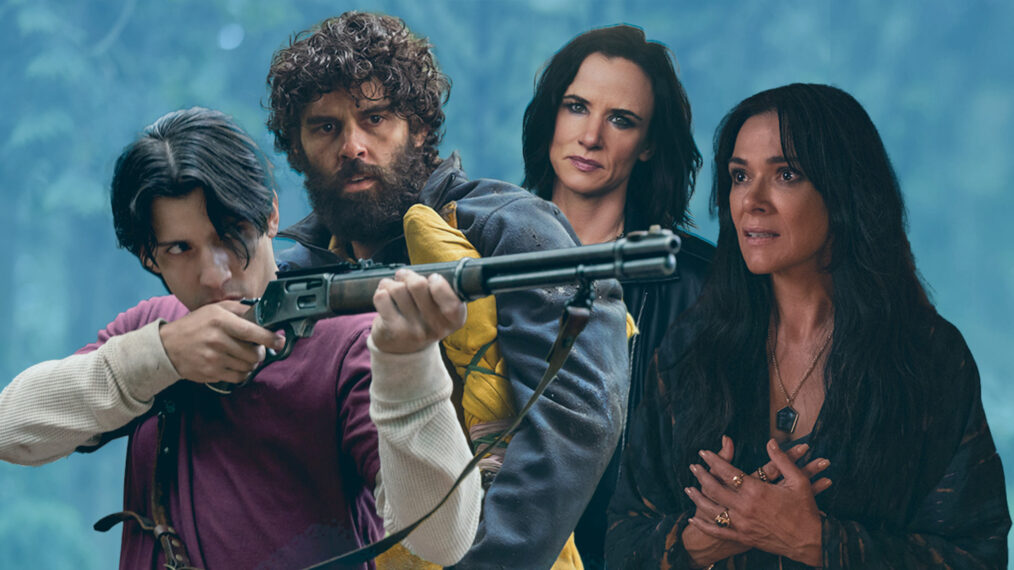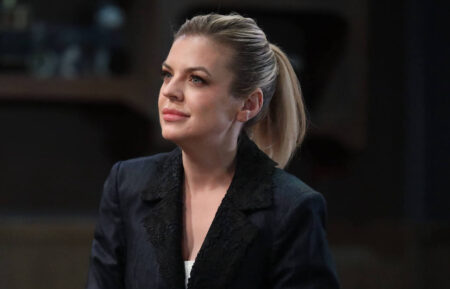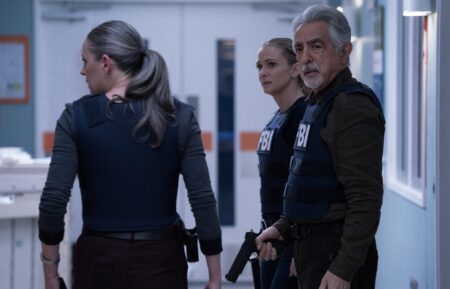‘Yellowjackets’ Continues to Weaponize the Doomed Character Trope

Opinion
[Warning: The following contains MAJOR spoilers for Yellowjackets Season 3.]
Since Yellowjackets premiered in 2021, it’s been clear that no character is safe. From Laura Lee (Jane Widdop) to Jackie (Ella Purnell), the wilderness quickly began to take its pick of the ensemble cast of characters. But, with Season 2, it became clear that the writers were adamant to bring some sorrow to the adult timeline as well. While this wouldn’t necessarily be a problem, the adults the writers continue to kill off are all linked by a fundamental aspect which joins them: From the teen timeline to the adult timeline, these characters have been plagued by the Doomed Character Trope.
A show like this is captivating because of the unpredictability of its circumstances. When each death relies on characters who have already suffered tenfold, it’s impossible not to feel nauseated each time someone is picked off. Although this trend feels like it started with Natalie’s (Sophie Thatcher, Juliette Lewis) death in the Season 2 finale, it was preceded by the death of her on-again-off-again boyfriend Travis (Kevin Alves, Andres Soto) who was found dead in the third episode of Season 1. He and Natalie were joined by a chord from the wilderness back to the real world, attempting to bury their sorrows together with drugs and alcohol.
While we know Travis well in the teen timeline, the adult version of him was relegated to flashbacks that focus on the minutes before his death. His passing has an immense impact on Natalie, yet his death feels like a blip in the show’s unfolding storyline. Despite this, the Travis we know has suffered perhaps the most of all the survivors. His father died in the initial plane crash, he was almost killed by the girls in “Doomcoming,” and his brother was hunted and murdered before being cannibalized. Now, in Season 3, he hangs in the balance between sobriety and intoxication, ingesting mushrooms in order to communicate with the wilderness.
Travis’ death leads Natalie to reconcile with the other Yellowjackets, but her death leads to the group fracturing once again. In the midst of this, both of them seem to have been trying to heal from their respective addictions — with Travis seeking out Lottie (Courtney Eaton, Simone Kessell) instead of Natalie before his death, and Natalie finally on her way to sobriety right before hers. The writers have snatched away any semblance of peace these two could have had in the future, and the fact that they were on a rocky road to recovery when this happened makes their deaths even more painful.
After the backlash the Season 2 finale caused, you’d think the writers would look inward and understand that killing off your most tortured characters may be a bad decision. But, in Season 3, they’ve continued to force their characters into a perpetual state of suffering. In the final moments of “12 Angry Girls and 1 Drunk Travis,” it is revealed that Lottie has now met her demise as she lays dead at the bottom of a dirty flight of stairs, just like her teen self envisioned back in Season 1.
Lottie’s death is probably the most shocking of the series. After another brief stint in psychiatric care, she appeared on Shauna’s (Sophie Nélisse, Melanie Lynskey) doorstep, looking to make peace with the women she has always found herself at odds with. She was being set up for an intriguing bond with Shauna’s daughter Callie (Sarah Desjardins) and seemed to be on a journey of healing after a lifetime of electroshock therapy and being medicated. But, just when she was on the precipice of taking the final step towards the light, it was snuffed out.
Season 3 has continued to weaponize this trope, following Lottie’s death with that of Coach Ben Scott (Steven Krueger), who is perhaps the most doomed on-screen character in the last decade, in “Thanksgiving (Canada).” Despite the fact that it seemed like he was destined for death in Season 1 after losing one of his legs in the initial plane crash, Ben continued to survive. This made him an underdog, just like Travis, Natalie, and Lottie, and allowed audiences to not only sympathize with him, but also root for his survival. But, he finally meets death, after Natalie mercy-kills him and witnesses the second father figure in her life die before her eyes.
Ben’s death, after being speculated since the show’s beginnings, feels lackluster. After a second season in which he reckoned with his sexuality — taking form in dream sequences and flashbacks featuring his ex-boyfriend Paul (François Arnaud) — there was a light at the end of a dark tunnel when Ben fled from the Yellowjackets and their ritualistic practices. In death, there is no resolution to the love and life he sacrificed when he got on the plane with the soccer team, and his short life instead ended with him being eaten by the same group he tried to nurture.
After so many characters have suffered under the darkness of the wilderness and in their home lives before, Ben’s demise feels like another instance of the writers forcing its characters into a never-ending limbo of suffering. It’s all encompassing, so much so that the show’s most resilient characters are forced to die as their only way to escape it. In the end, their hand is forced by a script outside of their realm of existence, forcing its audience to witness another character arc that ends in misery.
The death of these characters — outside of the teen timeline — does not heighten the show’s stakes. Instead, with each death, it feels as if the writers are hitting another nail into a sign that reads, “The only way out of trauma is death.” It’s a slap in the face not only to the talented performers who inhabit these now deceased characters on screen, but also to the viewers at home who may see themselves reflected back at them while they’re watching.
In weaponizing the doomed character trope, Yellowjackets has become a shallow version of a series that once promised innovation in the vast landscape of modern television. By portraying the remaining adult characters as unaffected husks, the show feels like it’s trying to force them and the viewers to forget that these other characters even existed. Instead of honoring the dead by eating them like the Yellowjackets do in the wilderness, this series has cannibalized itself to the bone, making it more unrecognizable with each episode.
Yellowjackets, Fridays, Paramount+ With Showtime, Sundays, 8/7c, Showtime









